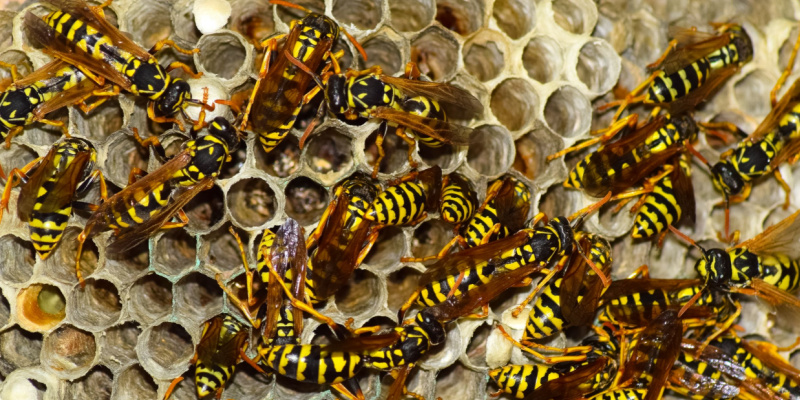Finding a wasp nest on your property can be a nerve-wracking experience. Not only are wasps known for their painful stings, but they can also be aggressive when defending their nests. So if you’ve discovered a wasp nest on your property, here’s what you should do.
Identify the Type of Wasp
The first step in dealing with a wasp nest is to identify the type of wasp that has built the nest. Different species of wasps have different behaviors and may require different removal methods. Some common species of wasps found in North America include yellow jackets, paper wasps, and hornets. Yellow jackets are aggressive wasps that often build nests in the ground, while paper wasps build umbrella-shaped nests under eaves and other sheltered areas. Hornets build large paper nests in trees, shrubs, and other high-up locations.
Assess the Situation
Once you’ve identified the type of wasp, assessing the situation is vital. For example, if the wasp nest is located where people or pets frequently pass by, such as a doorway or outdoor seating area, it may be necessary to remove the nest. However, if the nest is in a less-trafficked area of your property and the wasps are not causing any harm, it may be best to leave it alone. Wasps play an essential role in controlling pests, so if possible, it’s best to avoid removing the nest.
Protect Yourself
If you decide to remove the wasp nest, protecting yourself is important. Wasps can become agitated and aggressive when their nests are threatened, so wearing protective clothing and gear is crucial.
Cover as much of your skin as possible with thick clothing, such as a long-sleeved shirt and pants. Wear gloves, a hat, and a veil or mask to protect your face from stings. You should also work at night when the wasps are less active.
Remove the Nest
There are several methods for removing a wasp nest, depending on the nest’s location and the species of wasp. Here are a few options:
- Soap and Water
For small nests, such as those built by paper wasps, a mixture of soap and water can be an effective solution. Mix a few tablespoons of dish soap with a gallon of water and pour the solution into the nest at night. The soap will suffocate the wasps and cause them to die.
- Insecticide Spray
An insecticide spray can be effective for larger nests or nests located in hard-to-reach areas. Be sure to choose a spray labeled for wasps and follow the instructions carefully. Spray the nest at night when the wasps are less active and wear protective clothing.
- Professional Removal
If the nest is large, located in a difficult-to-reach area, or you are uncomfortable removing the nest yourself, it may be necessary to hire a professional pest control expert.
Dispose of the Nest
Once the nest has been removed, it’s good to dispose of it properly. Double-bag the nest in heavy-duty garbage bags and tie them tightly. Next, place the bags in an outdoor trash bin that is not easily accessible to people or pets.
Prevent Future Nests
To prevent future wasp nests on your property, there are a few steps you can take.
- Seal any cracks or openings in your home’s exterior to prevent wasps from building nests inside.
- Keep your outdoor eating and seating areas clean and free of sugary drinks or food, which can attract wasps.
- Remove any standing water on your property, as this can also attract wasps.
- Finally, consider planting insect-repelling plants, such as lemongrass or citronella, around your property to encourage the wasps to find a new home.
Remember, if you find a wasp nest on your property, the most humane thing to do is call a professional who can safely remove the nest. Wasp control experts will know how to handle the situation in a way that doesn’t put anyone in danger. When in doubt, always contact an experienced pest control expert such as Abarb Pest Services for help. With the right precautions and removal methods, you can safely and effectively get rid of wasp nests on your property.
